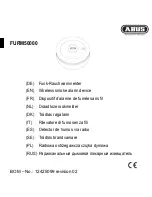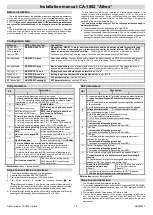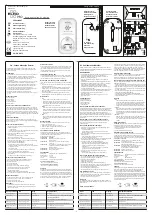
VESDA VLC-400 Product Guide
VESDA by Xtralis
30
www.xtralis.com
(where N = total number of holes; sampling holes + endcap)
Note:
These rule of thumb expressions are only relevant to the Pre-engineered designs presented in this
manual. They are not relevant to pipe configurations designed by an approved VESDA agent and
verified using the ASPIRE2 pipe modelling software.
8.6
Airflow Commissioning
The VESDA VLC-400 needs to normalize the amount of air flowing through the detector. This is achieved
using the ‘Normalize Air Flow’ command from the Device menu in Xtralis VSC.
Normalizing is used to set a reference point for normal airflow through the detector. If later the airflow varies by
more than the preset values set in the ‘Airflow’ parameters (refer to Chapter 6), a ‘Flow’ fault will be generated.
8.6.1
Normalization process
To start Normalization:
1. Open the front panel of the detector and attach the RS-232 cable to the DB9 PC programming interface
socket on the termination card.
2. Start Xtralis VSC.
3. From the ‘Device’ menu, select the “Normalization” option. The Normalization screen appears (refer to
Figure 8-1: Normalization Screen
4. When the Normalization option is selected a prompt appears Normalization telling you that it will take 11
minutes to complete. Are you sure you want to continue?” Click Yes.
5. When Normalization starts, the OK LED flashes twice every 2 seconds. Normalization takes 11 minutes
to complete. During this time the OK LED will continually blink with two flashes.
Note:
A Normalizing in progress fault is active during the ‘Normalization’ process.
6. During the first 5 minutes the detector measures the normal airflow to allow for future monitoring of flow
variations from this norm.
7. For the last 5 minutes the aspirator is turned off and the residual flow, due to any pressure differences, is
measured.
8. If the residual flow is too large or if the normal flow is too small a “normalization failed” fault is reported on
the detector (FAULT LED is ON) and a fault is also reported in the events log (Fault 75).
9. It is also reported back to the FACP as a “fault”, when Xtralis VSC is not connected.
10. When normalization is completed successfully the OK LED returns to a steady ON condition.
11. Exit Xtralis VSC and remove the RS-232 connector.
12. Replace the front panel.
Note:
The Fault LED remains ON while the RS232 cable is connected and Xtralis VSC is active. At the
same time the panel see the detector as being in a fault condition until the program and socket are
removed.
Содержание VESDA VLC-400
Страница 1: ...VESDA VLC 400 Product Guide June 2014 Document 03494_11 Part Number 18938...
Страница 2: ......
Страница 8: ...VESDA VLC 400 Product Guide VESDA by Xtralis 2 www xtralis com This page is intentionally left blank...
Страница 10: ...VESDA VLC 400 Product Guide VESDA by Xtralis 4 www xtralis com This page is intentionally left blank...
Страница 24: ...VESDA VLC 400 Product Guide VESDA by Xtralis 18 www xtralis com This page is intentionally left blank...
Страница 28: ...VESDA VLC 400 Product Guide VESDA by Xtralis 22 www xtralis com This page is intentionally left blank...
Страница 30: ...VESDA VLC 400 Product Guide VESDA by Xtralis 24 www xtralis com This page is intentionally left blank...
Страница 38: ...VESDA VLC 400 Product Guide VESDA by Xtralis 32 www xtralis com This page is intentionally left blank...
Страница 42: ...VESDA VLC 400 Product Guide VESDA by Xtralis 36 www xtralis com This page is intentionally left blank...











































